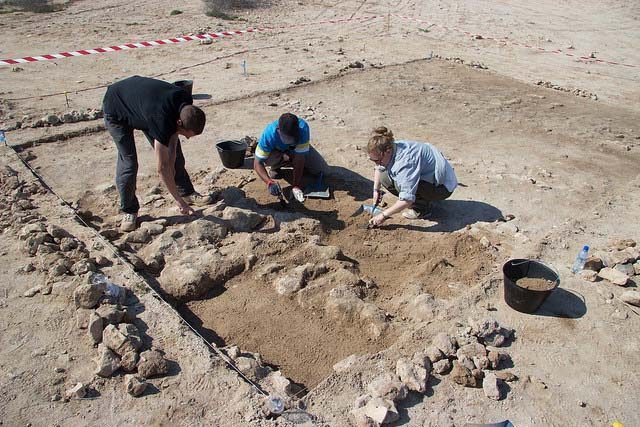
Buried in the sand near one of Qatar’s most popular beaches lies the remains of a pearl-fishing settlement that experts believe could date back around 300 years.
The site at Fuwairit is being excavated by archaeologists from the University College London Qatar (UCL Qatar) who are trying to find out more about what life was like before most of the country’s population moved from the north-east to Doha.
In February and March, a team from UCL Qatar dug two test trenches and surveyed the site to give them a better indication of what is underneath the surface.

They have already found pieces of 18th century pottery in the area.
When excavations start up again around November (after the summer heat fades), the archaeologists hope to find other artifacts to help give them a better picture of how people lived.
Why Fuwairit
Funded by a QR3 million grant from Qatar Foundation‘s Qatar National Research Fund for three years, the Fuwairit dig is an extension to the Origins of Doha and Qatar Project that UCL Qatar has been undertaking in the capital.
Dr. Robert Carter, professor of Arabian and Middle Eastern archaeology at UCL Qatar, said early indications are that the village of Fuwairit was inhabited at least four times between the 18th century and the mid 20th century.
The village was an important coastal settlement and became significant regionally as home to the Al Thani families in the early 19th century.

By excavating the site, archaeologists hope to find out more about the changing fortunes of the village over those years – who lived there, how did they live, what they ate, the tools they used in daily life and the possible variations in their wealth as the pearl industry flourished, then fell.
The archaeological site at Fuwairit will focus on ruined and buried buildings to the south of Jebel Fuwairit and to the west of Fuwairit beach and a mangrove swamp.
There are also ruined buildings of the village of Fuwairit to the south of that site.
Meanwhile, the remains of a mosque, fort and a number of other ruined structures can be found inland from Fuwairit on the site of Zarqa.
These represent a fortified site that would have provided the water and possibly agricultural areas used by people living in Fuwairit, according to an update on the project’s blog site:
“The remains are well preserved and after further excavation we should have an excellent comparison with our excavated Doha material (which is mainly late 19th and early 20th Centuries) – firstly to see what life in a Qatari town was like before Doha was occupied, and then to offer a rural comparison to the larger and (hypothetically) more urban settlement of Doha,” Carter added.
Comparison to Zubarah
Another one of the questions the experts are hoping will be answered by the project is whether Fuwairit existed before Zubarah was founded, which was around 1760.

“There were several coastal towns in Qatar (at that time). We know some of them, but we don’t know about Fuwairit. We are still examining the historical records but as yet we haven’t found a mention of it,” Carter told Doha News.
Now a Unesco World Heritage site, Zubarah was founded by merchants from Kuwait and was an important village in the regional pearl trade. It is one of the best-preserved examples in the Gulf of a settlement from its period.

But when it was destroyed around 1810 then subsequently abandoned, research shows that people returned to coastal towns and villages.
While the Fuwairit excavations are still in their early stages, the results of the new research should help “fill in the gaps” of some of Qatar’s history and give a fuller picture about what daily life was like for people living here in villages several hundred years ago, Carter continued.
The results of the research should also help “promote the long-term protection of Fuwairit, and develop ways that the archaeological remains can be better presented to the public,” a statement on the project’s website added.
Thoughts?







